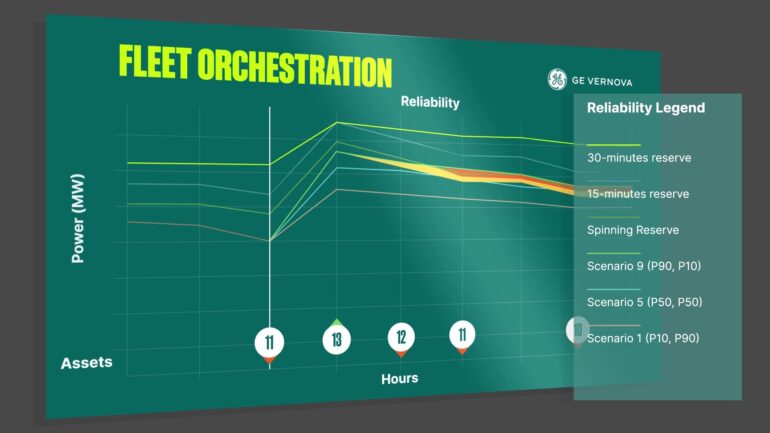TL;DR:
- GE Vernova introduces Fleet Orchestration, an AI-driven software for power utilities.
- The software optimizes renewable energy use, aligning it with existing assets.
- Features include Performance Predictions and unit commitment optimization.
- Linda Rae, GM at GE Vernova, highlights its role in reducing uncertainty for power companies.
- The software’s launch coincides with grid upgrades and increasing demand for power.
- It aids in setting appropriate margins to ensure grid reliability amidst climate-related challenges.
- Reserve margins may need to increase significantly to achieve a 56% renewables goal by 2040.
Main AI News:
In the ever-evolving landscape of renewable energy, GE Vernova emerges as a game-changer with its groundbreaking software, Fleet Orchestration. In a bid to empower power utilities, this innovative software harnesses the power of AI and machine learning to maximize the utilization of renewable energy sources.
This cutting-edge tool caters to vertically integrated utilities – those entities responsible for power generation, transmission, and distribution. Its primary objective is to expedite carbon reduction targets and cater to the surging demand for clean energy. The core functionality of Fleet Orchestration revolves around optimizing a utility’s reliance on excess fossil fuel reserves while instilling unwavering confidence in its renewable energy strategy.
One of the standout features of this software is its Performance Predictions module, which offers automated renewable energy forecasts across various time intervals, spanning from 15-minute increments to weekly projections for every unit, block, and plant. Additionally, the unit commitment optimizer module employs a stochastic model to furnish invaluable planning insights and real-time recommendations. These recommendations are tailored to prevailing conditions, guiding utilities in seamlessly aligning generation and demand, ultimately minimizing the dependency on fossil fuels and maximizing the utilization of renewables.
Linda Rae, the General Manager of Power Generation and Oil & Gas at GE Vernova’s Digital Business, underscores the pivotal role of renewables in the global energy transition. She acknowledges the inherent variability of sources like wind and solar, stating that “the wind doesn’t always blow, and the sun doesn’t always shine.” However, she emphasizes the critical need for a consistent power supply. Fleet Orchestration emerges as the solution to this conundrum, mitigating uncertainty for power companies and equipping them with the confidence to ensure grid stability while concurrently reducing emissions.
As the United States witnesses a series of upgrades to its electric grid, it is confronted with challenges posed by extreme weather events exacerbated by climate change. The reliability and security of the power grid have never been more crucial, especially in the face of soaring power demands during extreme weather conditions such as deep freezes or heatwaves.
In this context, GE’s software plays a pivotal role in setting appropriate margins, which are essential to maintaining the reliability of power systems during times of stress. This becomes increasingly critical, as reserve margins may need to surge from 15% to a staggering 300% by 2040 to achieve the ambitious goal of 56% renewable energy use, as indicated by a study released by ISO New England last year.
Conclusion:
GE Vernova’s Fleet Orchestration brings a game-changing solution to the renewable energy market. With its AI-powered capabilities, it addresses the challenges of integrating renewables into power utilities, ensuring greater reliability and sustainability in the face of increasing demand and climate-related challenges. This innovation is poised to reshape the landscape of renewable energy utilization.

